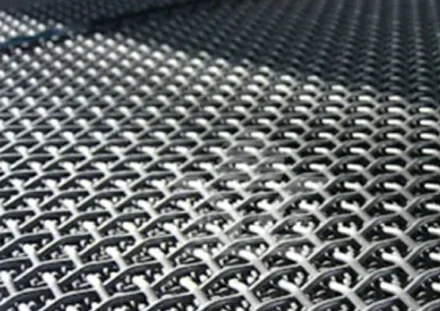Understanding Perforated Alloy Sheets Versatility and Applications
Perforated alloy sheets are materials that combine strength with lightweight characteristics, providing practical solutions across various industries. These sheets are made from various alloy materials, often aluminum, stainless steel, or other metal composites, which are then perforated with numerous holes. This unique manufacturing process not only enhances their aesthetic appeal but also serves multiple functional purposes, making them a go-to choice for architects, engineers, and designers.
One of the primary benefits of perforated alloy sheets is their durability. Alloys are known for their strength and resistance to corrosion, especially stainless steel and aluminum alloys. This resilience allows them to withstand harsh environmental conditions, making them ideal for outdoor applications. For instance, in architectural designs such as facades or cladding, perforated sheets can provide both structural integrity and an innovative visual design while resisting the elements.
Another critical advantage is the ability to customize these sheets according to specific needs. The size, shape, and pattern of the perforations can be tailored to achieve desired functionality, whether for aesthetic purposes, sound insulation, or airflow facilitation. Engineers can design sheets with varying hole sizes and spacing, optimizing them for applications in ventilation systems, lighting fixtures, and more.
In the construction industry, perforated alloy sheets serve various purposes. They can be used as noise barriers, reducing sound pollution in urban environments. Their perforated nature allows air and light to filter through while blocking out excessive noise, creating a more pleasant indoor or outdoor atmosphere. Additionally, these sheets can also act as sunshades, controlling the amount of sunlight entering a building, thus helping to regulate temperature and reduce energy costs.
perforated alloy sheet

Moreover, the aesthetic appeal of perforated alloy sheets cannot be understated. The patterns created by the perforation process can enhance architectural designs, providing a modern and sleek appearance. They are often used in interior designs, such as room dividers, ceilings, and decorative wall panels, providing visual interest while maintaining functional advantages. The interplay of light through the holes can create striking visual effects, making space feel more dynamic.
In the automotive and aerospace industries, the demand for lightweight yet strong materials is ever-growing. Perforated alloy sheets play a vital role in these sectors by reducing weight without compromising on strength or safety. The automotive industry utilizes these sheets for components like grill guards and panels, while the aerospace sector leverages them for interior components, contributing to overall weight reduction and fuel efficiency.
Sustainability is another pivotal aspect of using perforated alloy sheets. Many alloys, particularly aluminum, are recyclable, which means they can be repurposed at the end of their lifecycle. This aligns with modern sustainability goals, reducing the environmental impact of construction and manufacturing processes. Using recyclable materials contributes to a circular economy, minimizing waste and conserving resources.
In conclusion, perforated alloy sheets are an intersection of functionality and design, offering numerous benefits across various industries. Their strength, lightweight nature, customization options, and aesthetic appeal make them a compelling choice for architects, engineers, and designers alike. As the demand for innovative and sustainable materials continues to rise, the role of perforated alloy sheets is likely to expand, paving the way for new applications and creative possibilities in both industrial and architectural realms.
-
Why Galvanized Trench Cover Steel Grating Resists Corrosion
NewsJul.10,2025
-
The Versatility and Strength of Stainless Expanded Metal Mesh
NewsJul.10,2025
-
Load Calculations in Steel Grating Platforms
NewsJul.10,2025
-
Keeping Pets and Kids Safe with Chicken Wire Deck Railing
NewsJul.10,2025
-
Hole Diameter and Pitch for Round Perforated Metal Sheets
NewsJul.10,2025
-
Aluminium Diamond Mesh in Modern Architecture
NewsJul.10,2025
Subscribe now!
Stay up to date with the latest on Fry Steeland industry news.

